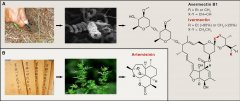Introduction: Click Chemistry
发布日期:2022-10-07 20:48
来源:网络
作者:Neal K. Devaraj
浏览次数:
Introduction: Click Chemistry
Neal K. Devaraj* and M. G. Finn*
Cite this: Chem. Rev. 2021, 121, 12, 6697–6698
Publication Date:June 23, 2021
https://doi.org/10.1021/acs.chemrev.1c00469
Click chemistry, as first articulated by Sharpless and colleagues in 2001, (1) was born of a desire to harness the power of molecular assembly for the widest possible range of applications. The logic behind click chemistry is simple: (i) new molecular properties are needed everywhere; (ii) such properties can emerge from the joining of small molecular building blocks; (iii) scientists and engineers not trained in synthetic chemistry often lack the skills and equipment needed to perform such connecting operations reliably; and (iv) chemical methods exist, and more can be developed, that make molecular connections easily.
The “click” in click chemistry was meant to convey the type of convenience and satisfaction one is afforded by snapping objects together with a luggage strap connector. It does not matter what the pieces are; if the two ends of the buckle can reach each other, the linkage is made. This powerful idea—that good chemistry can enable impactful chemical entities to be created by anyone—has motivated or supported an enormous range of endeavors in many fields including materials science, surface science, analytical chemistry, chemical biology, and drug development. And since methods for the selective and reliable making of bonds are actually quite difficult to discover, the sibling fields of click and bioorthogonal chemistry have synergistically led to the development of new sophisticated chemical reactions along with the highest level of mechanistic insight.
The foundational reactions of click chemistry were all venerable ones in the history of organic synthesis, including conjugate addition, strained ring opening, acylation/sulfonylation, aldehyde capture by α-effect nucleophiles, and cycloaddition. It is often forgotten that the copper-mediated azide–alkyne cycloaddition (2,3) (mechanistically not a cycloaddition at all) had yet to be discovered when click chemistry was first introduced. But an understanding of the potential power of such reactions—the real lasting value of the click chemistry concept—was certainly a motivator in Sharpless’ search for a fast azide–alkyne ligation process. Its success, along with that of its biocompatible predecessors, the Staudinger (4) and native chemical ligation (5) reactions, got the field off to a rocket-fueled start.
Two decades later, we are now in the midst of a new wave of click chemistry, featuring both the continuous development of reaction methods and their ever-faster adoption across scientific disciplines. While not intended to represent a comprehensive survey of the entire field, this thematic issue of Chemical Reviews contains 14 accounts of different aspects of click chemistry reaction types and applications. Among the former, the reader will find insightful discussions of two types of polarized cycloaddition components, by Pezacki (nitrones) and Taran (mesoionic compounds such as sydnones). Dove provides a wide-ranging overview of nucleophilic addition to activated alkynes in a variety of situations, and Raines gives us an illuminating insight into recent chemistry with an old actor, cyclopentadiene. Prescher likewise provides an update on Staudinger-like processes, and Franzini summarizes other metal-free click reactions, such as tetrazine ligations, that have transformed chemical biology by being compatible with biological systems.
Since click reactions are usually characterized by high energy content in one or more reactants, building in such driving force is often the difficult step. Three contributors provide timely coverage of different ways to accomplish this, with light (Bowman and Lin) and oxidation (Albada). Implicit but not explored in the original image of the clicking luggage buckle was also the ability to disconnect on command. Johnson reviews this subject, dubbed “clip chemistry”, since breaking bonds can be as important as making them.
Since biology is the most complex arena in which molecular synthesis can make an impact, we are also pleased to include reviews of four types of biomolecular applications of click chemistry. Brown surveys the use of click reactions with nucleic acids, and Paegel reviews the use of a variety of reactions in the presence of DNA, the key chemical requirement to harness the power of DNA-encoded libraries. The modification of lipids (Distefano) and carbohydrates (Tiwari, future issue, DOI: 10.1021/acs.chemrev.0c00920) by fast and selective reactions (mostly of the azide–alkyne variety) completes the tour.
As highlighted in the title of its first description in 2001, function is the point of click chemistry. Its success can be judged by how well it allows chemists and nonchemists alike to harness the power of molecular manipulation for the discovery and optimization of useful properties. But for those of us who are fortunate enough to be able to study molecular reactivity in its own right—for whom the behavior of molecules rises to the level of personality—click chemistry is also the pursuit of profound beauty. In other words, for both fundamental and practical reasons, it is great fun.
We are supremely grateful to the authors for their scholarship and insights. We hope that the readers derive as much pleasure from these reports as we do.

A New Golden Age of Natural Products
2016-07-23
Ben Shen DOI: http://dx.doi.org/10.1016/j.cell.2015.11.031 The 2015 Nobel Prize in Physiology or Medicine has been awarded to William C. Campbell, Satoshi Omura, and Youyou Tu for t...

“Click” reactions in polysacchari
2015-11-13
Xiangtao Meng a , b , Kevin J. Edgar a , b , , a Macromolecules and Interfaces Institute, Virginia Tech, Blacksburg, VA 24061, United States b Department of Sustainable Biomaterials...

中国丝状真菌次级代谢分子调
2019-04-18
遗传, 2018, 40(10): 874-887 doi: 10.16288/j.yczz.18-169 综述 中国丝状真菌次级代谢分子调控研究进展 潘园园,1, 刘钢,1,2 1. 中国科学院微生物研究所,真...

Self-Fueled Biomimetic Liquid Metal M
2015-03-27
Self-Fueled Biomimetic Liquid Metal Mollusk Authors Jie Zhang, Youyou Yao, Lei Sheng, Jing Liu Abstract A liquid metal motor that can eat aluminum food and then move spontaneously a...




